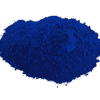
Patent blue V
High risk
Alternate Names:
- ci 42051
- ci food blue 5
- fd&c blue 5
- patent blue 5
Info from food-info.net:
- Description:
- Function:
- Blue food colour. Very soluble in water.
- Origin:
- Synthetic blue colour.
- Side effects:
- Side effects rarely occur in the concentrations used in foods. Rare allergic reactions have been described, due to coupling of the colour to (body) proteins. It can also function as a histamine liberator.
Dietary restrictions:- None; E131 can be consumed by all religious groups, vegans and vegetarians.
Acceptable daily intake:- Up to 15 mg/kg body weight.
Status:- Unknown
Info from proe.info:
- Description:
- Benefits:
- Due to its synthetic origin, the E131 additive is not characteristic of living organisms. There is no scientific evidence of any benefits of the E131 food additive at the moment.
- General:
- The Patent Blue V (E131 food additive) is a synthetic azo colorant with a dark blue-violet color. The Patent Blue V colorant is produced by synthesis from coal tar. The molecular formula of the E131 additive: C54H62CaN4O14S4.
- Harm:
- The use of the E131 colorant can lead to gastrointestinal disorders and allergic reactions, hyperactivity, hives, anaphylaxis and asthma attacks. Besides, the E131 additive should be excluded from the diet for people who are allergic to aspirin.
- Legal:
- The E131 additive is banned as a food coloring in Australia, the United States and Norway. In Ukraine and Russia Patent blue V colorant is allowed for use in foodstuffs as a purple colorant E131.
- Use:
- In the food industry, the E131 additive is not widely used, but it can be found in minced meat, sausage and meat products. Recently, E131 colorant is often used in some types of beverages. In addition to the food industry, the Patent blue V colorant is used in medicine, as a diagnostic paint for procedures.
- Links:
- Unknown
Dietary restrictions:- Unknown
Acceptable daily intake:- Unknown
Status:- Unknown
ninamvseeno.org -- site no longer live
- Description:
- Banned in Australia, USA and Norway. It can cause allergic reactions, itching, nausea, hypotension, in rare cases anaphylactic shock.
Dietary restrictions:- Unknown
Acceptable daily intake:- 5,000 mg/kg body weight/day (EFSA, 2013)
Status:- Approved in the EU. Banned in the US and Australia.
References: